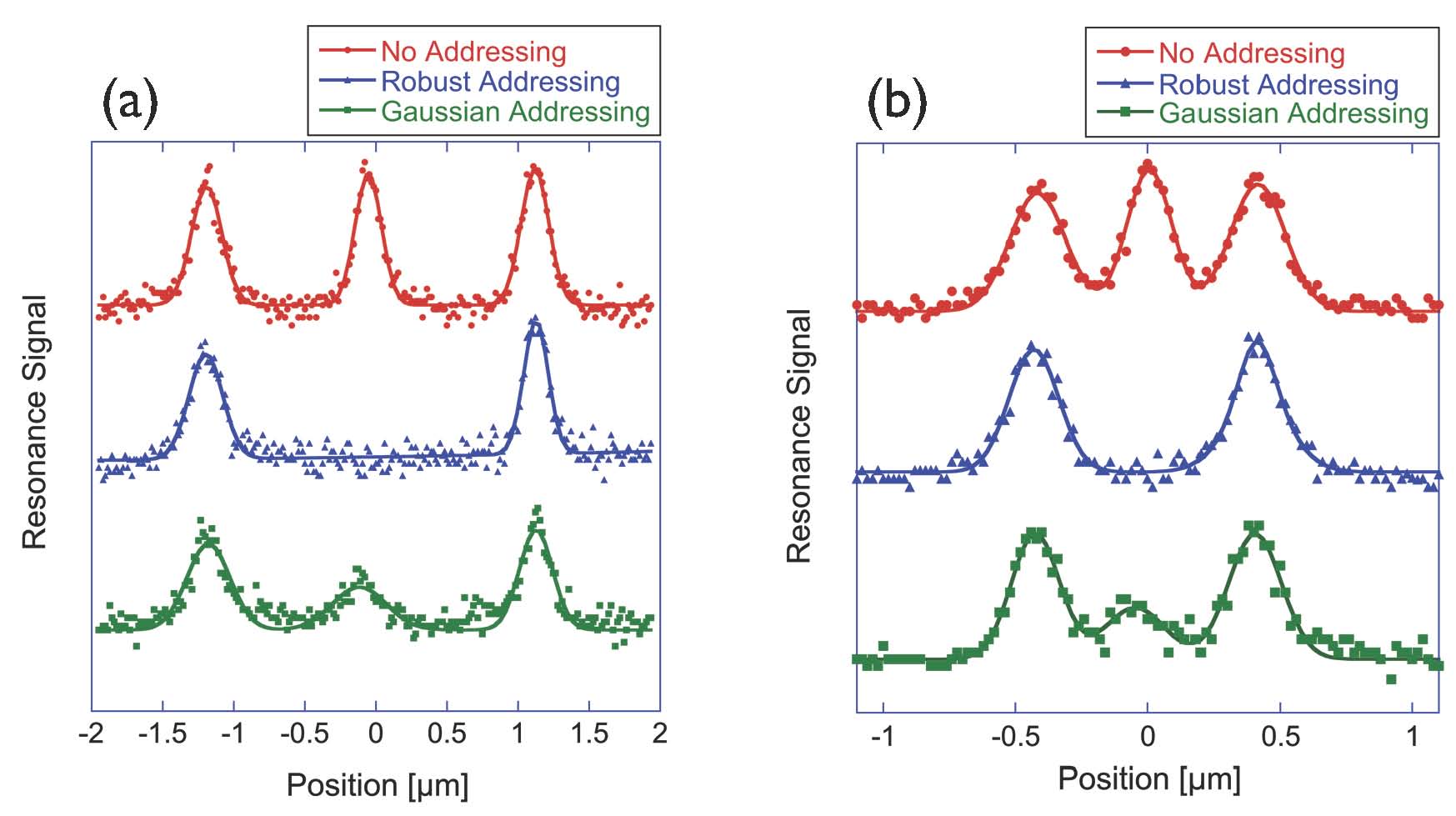Optical Lattices Lab
In this lab we have demonstrated a resonance imaging protocol for optical lattices that enables robust preparation and single qubit addressing of atoms with sub-wavelength resolution. Our setup consists of a 3D optical lattice, and a superimposed long-period (66 lattice sites) 1D “superlattice” that creates a position dependent shift of the transition frequency between two spin states in the ground manifold.

Fig. 1. Optical table
We have shown that isolated planes of atoms can be prepared by flipping resonant spins with a microwave pulse and removing the remaining non-resonant spins. A second microwave pulses in a translated superlattice subsequently allow us to image these planes with a resolution better than 200 nm. Also we have shown that composite pulse techniques can reduce the sensitivity of the addressing to small variations in the relative position and intensity of the lattices.

Fig. 2. Lattice beams
This robustness is achieved by applying numerically optimized, phase modulated pulses that have a constant atomic response within the region of error. For example, we apply a composite microwave pulse that flips the spin with near unit fidelity for all atoms that are positioned within a target spatial region (e.g., one lattice site), while conserving the spin of the atoms outside of that region (e.g., neighboring lattice sites). Furthermore, with this technique, we show that we are able to implement independent unitaries (single qubit quantum gates) across several adjacent lattice sites with a single composite pulse.

Fig. 3. Results
We have performed randomized benchmarking, similar to that done by Olmschenk et al., to measure the error per randomized computational gate using composite pulses.

Fig. 4. Results

